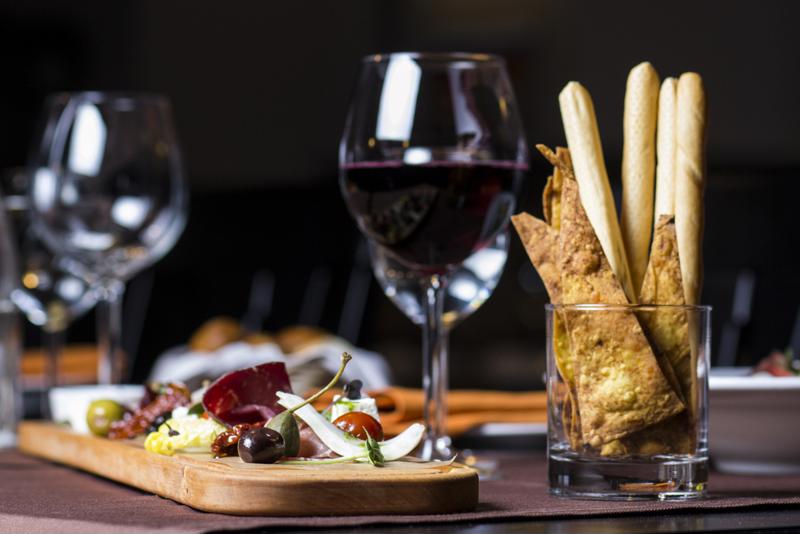Tableside carts have made a major comeback as an integral part of the service in many restaurants across the country. This choice in presentation, which may seem like a throwback to earlier times, could actually point the way forward for those attending culinary academy. By understanding how chefs and front-of-house staff work together to create exceptional dining experiences for patrons, you can develop your own ideas for compelling presentations.
Why carts are back
The simplest explanation for why carts have returned is that they are just a more appealing way to show off what a restaurant has to offer. These establishments reveal their culinary creations and delicious beverages on four wheels. That means, instead of just reading a description or inspecting a photograph, patrons have the opportunity to see and smell exactly what they are ordering.
“Carts are an appealing way for a restaurant to show off.”
Furthermore, waiters, chefs and bartenders who are pushing carts can get out into the crowd and interact more closely with the customers, who are in turn more likely to welcome their delicious offerings. With a little showmanship and personal engagement from the server, diners are certain to have a memorable evening. Enjoying a bread and cheese appetizer, sipping a cocktail or selecting a dessert becomes a miniature theatrical event.
For instance, as USA Today pointed out, Jeffrey’s in Austin, Texas, allows diners to make selections from a martini cart. They can even choose which of an array of vintage glasses they want the drink poured into. After dinner, they are invited to enjoy selected cheeses along with baguette, peppered nuts, honey and, if they like, a glass of sherry or port.
Joey Ward, the executive chef of Atlanta’s Gunshow, told Bon Appetit that his restaurant mainly uses its tableside service to present visually exciting dishes. For instance, a shrimp cocktail comes atop horseradish granita, which is shaved in front of patrons. However, the staff is also conscious of the historical connotations of the cart.
“We use it in a retro way sometimes, too,” Ward said. “We pay homage to the old-school dishes you’d get at the country club or steakhouse that’ve now gone out of fashion.”
 Tableside service provides a distinctive dining experience.
Tableside service provides a distinctive dining experience.Adding some flair to dinner
Increasingly, restaurants are taking the entertainment of tableside service a step further. By tying spectacle into the meal, restaurateurs ensure that diners have experiences they will tell their friends about.
Luigi Fineo, formerly of RivaBella in West Hollywood, is one chef who believes in taking the extra time for extraordinary service. He put the finishing touches on a wild mushroom risotto at the table, the preparation ocurring in the middle of an enormous wheel of Parmigiano-Reggiano cheese. The dramatic presentation didn’t end there: For dessert, a server hand cranked an ice cream mixer, freezing the base with liquid nitrogen before adding toppings.
Speaking to USA Today, Fineo explained his relatively slow but impressive approach as part of a cultural heritage.
“In Italy a two-and-a-half-hour dinner is standard,” he said. “You relax. You enjoy. Our tableside presentations allow for that same unhurried experience. And enjoyment.”
A similar principle guides the service at New York City’s old-school eatery, Carbone. As Zagat explained, when customers order a Caesar salad, the presentation puts a fascinating spin on this old favorite. A waiter prepares the Caesar Alla ZZ at the table, combining Caesar dressing with pecorino cheese, Worcestershire sauce, black pepper, sea salt and a touch of extra virgin olive oil before adding romaine leaves. At last, the salad is ready to be plated and garnished with garlic croutons, ricotta salata and anchovies.
The Food Network reported that at Nashville French restaurant Le Sel, chef Rene De Leon prepares a salt-crusted fish at the table. He first removes the bones and stuffs it with lemon and rosemary. Then, he then places the fish in a crust of salt, egg whites and flour to bake. In the end, the server cracks open the crust to reveal a perfectly tender and delicious final product.
Tableside service adds excitement and a unique element to dining out. Meanwhile, it offers inspiration for chefs looking to show off the skills they developed in culinary arts programs. Indeed preparation and presentation can be almost as important as a dish’s flavor in capturing patrons’ appreciation and drawing them back to the restaurant.




